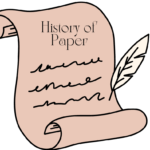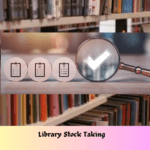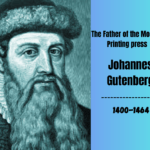The modern life system has changed significantly as a result of the application of science and technology. Innovation has come in human behavior, practice, and expression of thoughts. Different styles have entered the curriculum. With the application of technology in factories, machines, robots, etc., have taken over the place of human physical labor. When machines are doing a lot of work directly in production, naturally many people have become unemployed. Therefore, although various evolutions have been observed in modern printing, e-books, or electronic books, are narrowing the space of workers in the publishing industry day by day.
Due to computer science and internet facilities, the e-book system has come to the market. It is as if the world’s largest library has entered the computer held in your hand. Some people think that e-books are silently destroying the market for paper books published and managed in the traditional way. Many people think that since e-books are within reach, advanced readers are reducing their reading of paper books. However, there are many who, despite having e-books, have not moved away from the smell of printed paper books. They do not want to deprive themselves of the pleasure of turning the pages with the gentle touch of their fingers.

The History of Paper Books
Paper books boast a profound ancestry that stretches back over millennia, showcasing humanity’s quest for recording and sharing stories.
1. Ancient Beginnings
- Clay Tablets (c. 3000 BCE): The inception of written communication took place with the Sumerians and Babylonians, who inscribed cuneiform on clay tablets, marking the dawn of recorded history.
- Papyrus Scrolls (c. 2400 BCE): In ancient Egypt, papyrus—a material derived from the pith of the papyrus plant—was utilized to craft scrolls, enabling the documentation of religious texts, literature, and administrative documents.
- Parchment Codices (c. 200 CE): The Romans innovated further by binding parchment pages, made from animal skins, into codices. This format resembled modern books and offered a more durable and portable option than scrolls.
2. The Birth of Printing
- Movable Type (1040 CE): In China, inventor Bi Sheng revolutionized printing with his creation of movable type, allowing for the reuse of individual characters and significantly speeding up the printing process.
- Gutenberg Press (1440 CE): Johannes Gutenberg’s invention of the mechanical printing press was a watershed moment, facilitating the mass production of books. This drastically reduced costs and democratized access to written knowledge, igniting the spread of literacy across Europe.
- Industrial Printing (19th Century): The advent of steam-powered printing presses enabled rapid book production, which contributed to the surge in literacy rates among the public.
3. Modern Books
- Paperback Revolution (1930s-1950s): The introduction of affordable paperback books made literature accessible to a broader audience, with notable titles reaching readers who previously could not afford hardcovers.
- Digital Printing & Self-Publishing (Late 20th Century-Present): The digital age brought about advancements that allowed authors to self-publish their works easily, leading to a radical shift in the publishing landscape as independent voices emerged.
The History of Ebooks
In contrast, ebooks represent a relatively new chapter in the evolution of reading, closely tied to advancements in digital technology.
1. Early Experiments
- 1949—First Concept of an Ebook: Spanish teacher Ángela Ruiz Robles conceived an early mechanical device intended to store and display books in a digital format, laying the groundwork for future developments.
- 1971—Project Gutenberg: Michael S. Hart embarked on a groundbreaking initiative that digitized public domain texts, creating an extensive online library that aimed to make literature freely accessible to anyone with access to a computer.
2. Growth and Adoption
- 1990s—The First E-Book Readers: A wave of dedicated devices, such as Sony’s Data Discman, emerged alongside primitive software-based readers, offering the initial experiences of digital reading.
- 2000—Microsoft Reader & Adobe Acrobat: These platforms introduced popular ebook formats, including .LIT and .PDF, which made electronic books more user-friendly and widespread.
- 2007—Amazon Kindle: The launch of the Kindle, coupled with an integrated ebookstore, transformed the digital reading experience, allowing users to access vast libraries of books instantly from their devices.
- 2010s—The Rise of Tablets & Apps: The introduction of devices like Apple’s iPad and the proliferation of reading applications, including Kindle, Kobo, and Nook, significantly increased the popularity of ebooks by enhancing user experience and accessibility.
3. Modern Era
- Subscription Services & AI Integration (2020s-Present): Platforms such as Kindle Unlimited and Scribd have emerged, introducing subscription models for ebook access. Additionally, the integration of AI in reading apps has further revolutionized how consumers engage with digital literature, providing personalized recommendations and enhanced reading experiences.
This rich narrative reflects the ongoing evolution of how we read and interact with books, highlighting the transition from physical forms to digital formats in a world that is ever-evolving.
Approximately 70 percent of the world’s population has access to the Internet. Recent data indicates that around 5 billion people worldwide currently use the internet, which represents roughly two-thirds of the global population. In 2018, Amazon reported selling close to 90 million e-readers. Looking ahead, the e-reader market is expected to rebound. By 2027, Statista projects that the number of e-reader users will grow to 1.1 billion, leading to anticipated revenue of $15.33 billion in the eBook market.
Renowned author John Pinkin expressed his dismay about the e-book business model. He commented, “As a writer, I’m going to have to rethink my plans if I’m going to support my family full-time.” His comments suggest that the digital revolution is not only threatening the traditional printing press model but also that publishers are now leaving behind new writers. As a result, they are falling behind in becoming writers for the people. Since e-books are cheaper than printed books, publishers are making little profit. Large wholesalers are also buying certain types of books. As a result, the book trade has become limited. The e-book economy is bringing some pain and fatigue to the current generation of writers. An author is not getting even half the amount of money he could have earned from a best-selling book. E-book revenue is expected to grow by about 5% in 2025 compared to the previous two years, while printed book revenue is anticipated to decline by approximately 2-3% during the same period.



